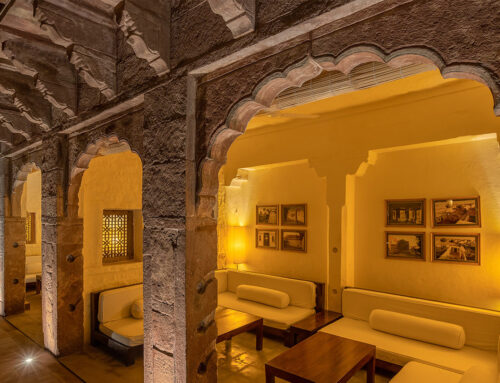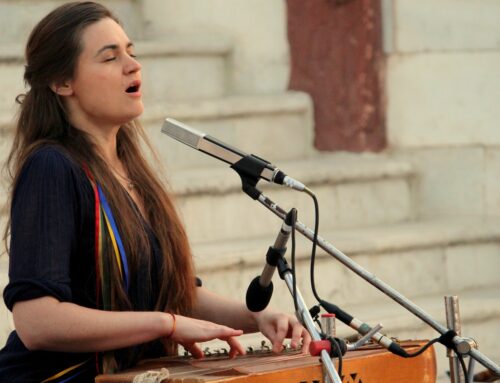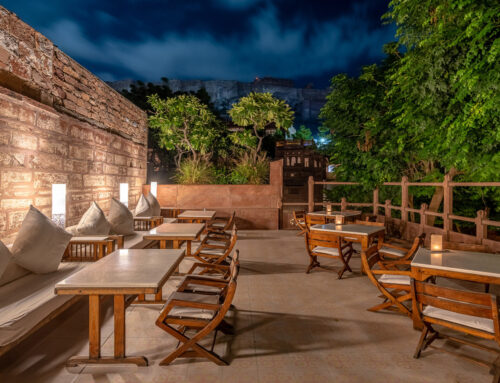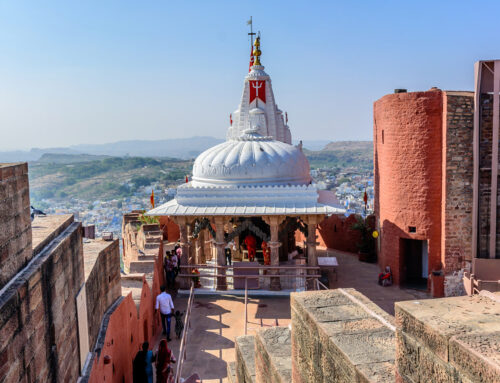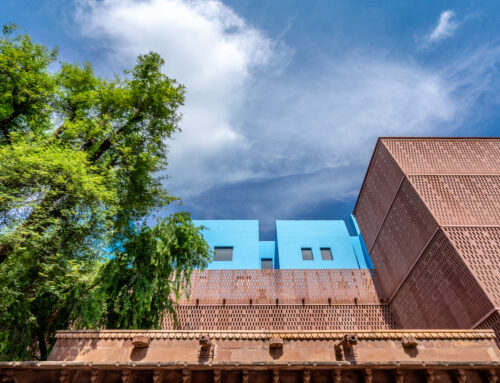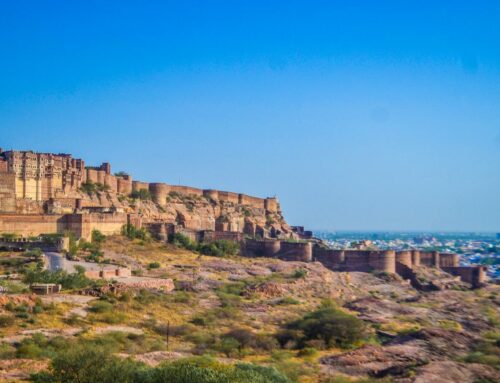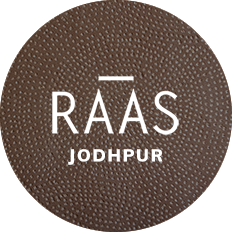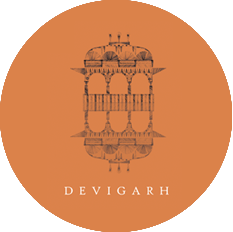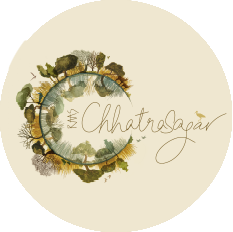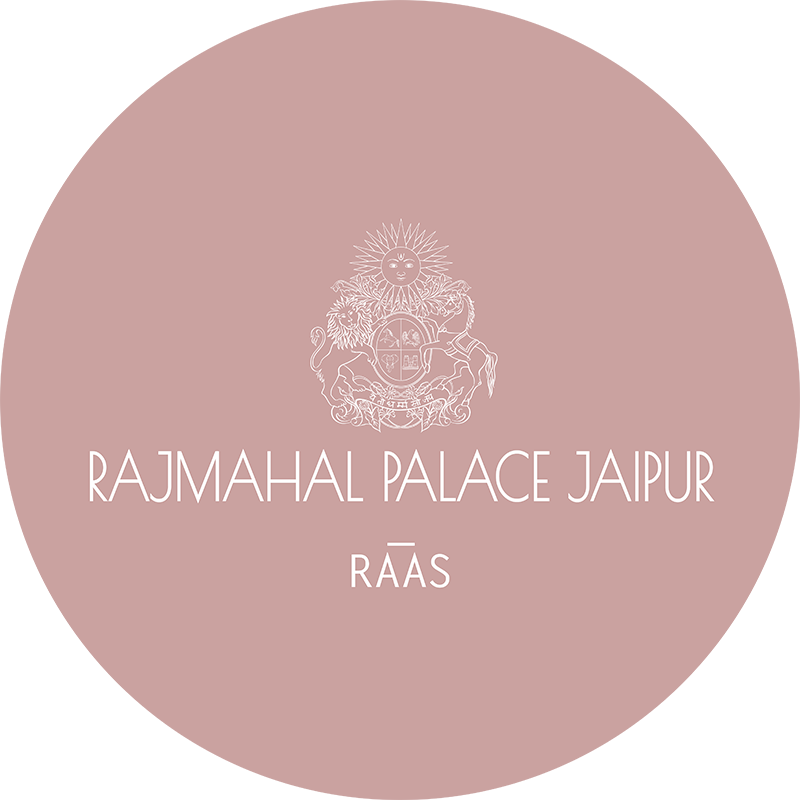The Baradari
As one walks through the doors of the eighteenth century RAAS Haveli in the old walled city of Jodhpur, the beautiful Baradari pavilion is in view, set against a vista of the majestic Mehrangarh Fort.
The twelve pillared pavilion, built in Mughal architecture, holds twelve arched doorways that allow free flow of air through its walls. ‘Bara’ in Urdu and Hindi means Twelve, and ‘Dar’ means Door. In the times of the Mughal empire, the ‘Baradaris’ were well suited for courtesan dance performances and Musical concerts by poets and musicians of the Kings Durbars.
The acoustics were apt, and fresh air flowing through the ‘Daris’ gave respite during the hot Indian Summers. Built in rose red Jodhpuri sandstone, painstakingly restored by local craftsmen using traditional materials and techniques, the Baradari stands at the centre of the RAAS Haveli. Once a Durbar Hall used by the Rajput Thakurs, the Baradari is now an iconic restaurant, framed with breathtaking views of the Fort. The traditional ‘Aalas’ from Rajasthani architecture, are seen holding books for one to read at leisure, and soak in the richness in the air that wafts through the walls. At nightfall, the soft golden glow from the beautifully lit arches compliment the lights of the Mehrangarh Fort, making it a magical place to experience the old walled city, and reimagine the Royal Rajput glory.
_
Written by Anushka Gupta @AnushkaGupta5

